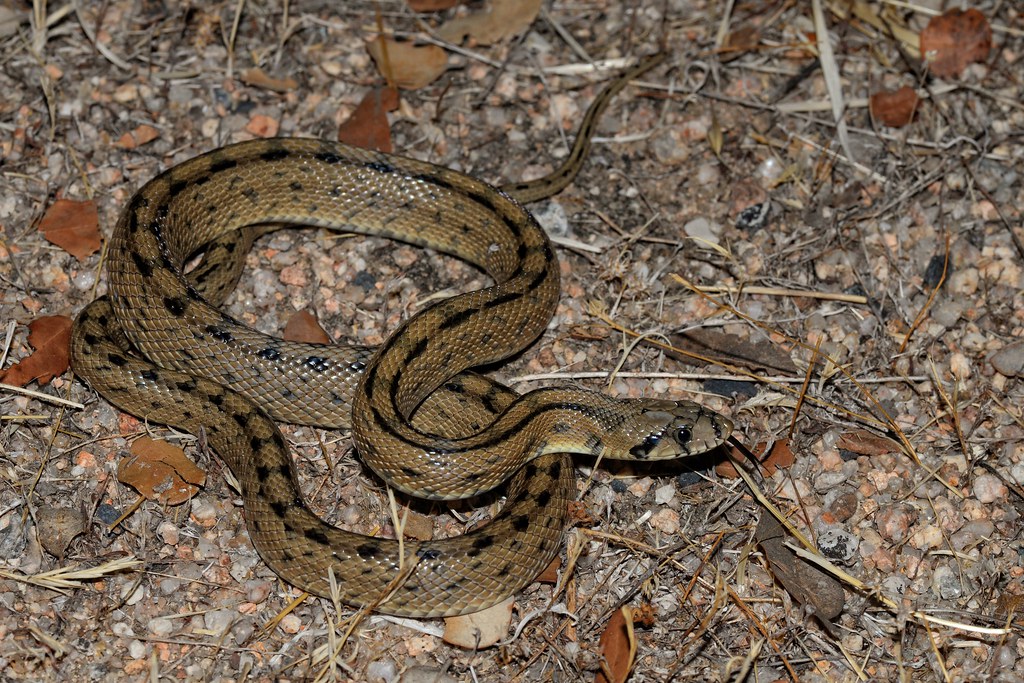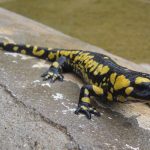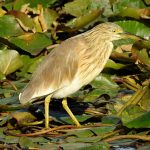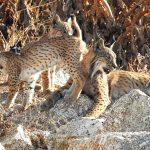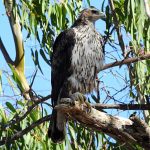As you walk through the countryside you hear a winding noise in the vegetation. Who hasn’t been startled by the movement of a snake in the dry grass? Or the stampede of a lizard as it flees through the bushes when it notices our presence? The reptiles of Extremadura are one of the most unknown, but no less relevant, classes. Don’t forget that the vast majority of offidios are harmless to human beings… And the few that are poisonous present hardly any danger so when you come across them just enjoy their presence at a safe distance.
Reptiles have always aroused curiosity and respect, and it is well worth spending a few seconds observing them when we have a fleeting crossing in the countryside
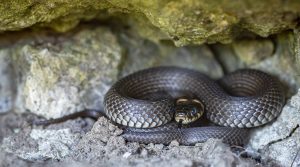
With average temperatures several degrees above the country’s average, Extremadura is an excellent community for reptile watching. Here they are active for more months of the year than in other colder communities. These are the species we can observe:
Family Colubridae (Reptiles of Extremadura)
Bastard snake Malpolon monspessulanus
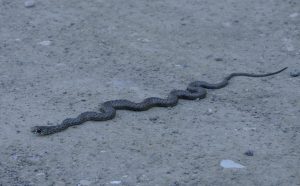
The largest snake in the Iberian Peninsula, it can measure up to 240 cm. It behaves aggressively if it is cornered, although its bite is not dangerous to humans. However, it has a small amount of venom in its back teeth that inoculates the small rodents it feeds on. Since it is located in the back teeth it will never reach a human being in case of an accidental bite. Very common, we can see it in pastures, grasslands and bushes all over the region. It prefers sunnier areas and feeds on small vertebrates (younger specimens eat many invertebrates as well).
Collared snake Natrix aspreptophora
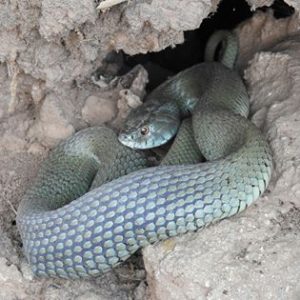
The collared snake, or water snake, is a snake associated with river ecosystems. It feeds on all kinds of small animals: mainly amphibians and fish, but also small mammals or birds if it has the chance. It swims very well and is usually active during the day, so we can easily observe it in streams, creeks, lagoons and other aquatic ecosystems.
Horseshoe snake Hemorrhois hippocrepis
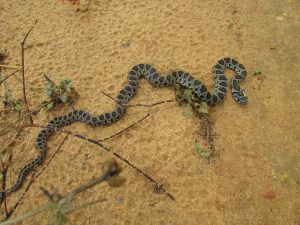
Its circular spots on its entire back are characteristic of the species. It is a large snake, similar to the staircase snake, which lives in open spaces such as the Mediterranean scrubland, pastures, grasslands or crops. It does not like dense trees but is a good climber and often preys on birds’ nests, whether in trees or in holes in stone walls. Although it is not threatened it is not very abundant either so we will be lucky if we come across it.
Ladder snake Zamenis scalaris
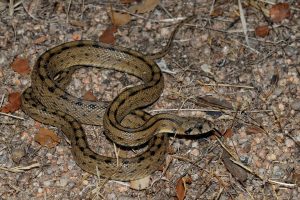
The ladder snake is the second largest snake in the peninsula, after the bastard snake, reaching more than 150cm the largest specimens. It lives mainly in low-density forests, riverside forests, pastures and ecotones. It is also comfortable in cereal areas as long as they have bushes and thickets nearby for shelter. We find it all over the region.
Smooth snake Coronella austriaca
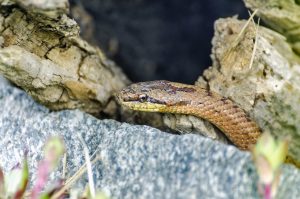
Medium sized snake, rarely exceeding 60 cm. Generally greyish in colour, turning reddish in some specimens, it is characterised by a dark line on both sides of the head. It occupies areas with sufficient plant cover, either areas of bush or forest borders. There it feeds mainly on small reptiles, although it can also occasionally capture small mammals. It mainly inhabits the northern half of the peninsula, although it has occasionally been observed north of Cáceres.
Snake of cogulla Macroprotodon brevis
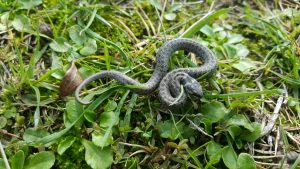
The snake of cogulla lives in meadows and pastures and is distributed throughout Extremadura, although it is not particularly abundant. It is very small, no more than 40 cm, and usually takes refuge under small stones. It tends to be near wetlands, streams, lakes, rivers… and feeds on small reptiles. As soon as the temperature rises enough, it has night habits. It has a small amount of poison, which it also inoculates from its back teeth, so it is not dangerous to humans.
Southern smooth snake Coronella girondica
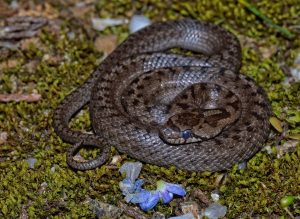
It’s a medium sized snake <80cm. Behind its head it has a large, characteristic U-shaped spot. Its preferred ecosystem is the Mediterranean scrubland, looking for dry, rocky, south-facing slopes. The best time to observe it is spring, as it is very active during the day.
Viperine snake Natrix maura
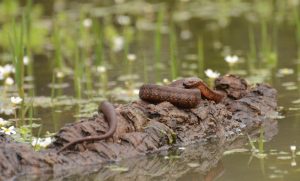
Like Natrix natrix, it has aquatic tastes and is usually found in the same ecosystems, carrying a similar diet. Its head is triangular in shape, resembling the shape of a snake’s head, hence its name. It is more abundant than the collared snake and we can observe it in similar situations.
Family Viperidae
Snub-nosed snake Vipera latastei
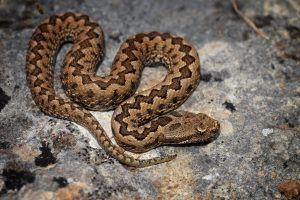
It is a small snake (usually not more than 60 cm), which is characterized by a dark zigzag band on the back. It lives in rocky and stony areas of the Mediterranean mountain, with abundant shelters and far from rural areas. This viper feeds mainly on shrews, mice and other reptiles, although it can also prey on invertebrates. It is one of the rarest reptiles in Extremadura, although it is distributed throughout the region, provided that the required habitat is present. Although it is poisonous, its sting is not fatal to humans, but we must be equally careful.
Family Lacertidae (reptiles of Extremadura)
Black-green lizard Lacerta schreiberi
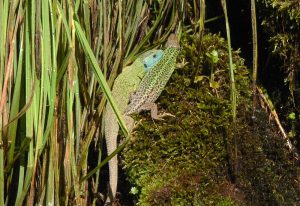
It is a lizard of considerable size, second only to its relative, the ocellated lizard. Adult specimens have multiple black spots on their backs and live in both bushes and deciduous forests, always with nearby waterways, generally at a certain altitude. We can also observe it on stone walls, with nearby mowing pastures. Its state of conservation is “almost threatened” so it is not very abundant. The northeast of Cáceres is the best area to observe it.
Carbonell’s lizard Podarcis carbonelli
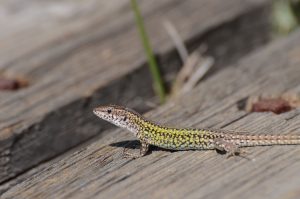
A small lizard (less than 5 cm), that has a predilection for rocky and stony areas. It is also very comfortable on stone walls, whether fences or walls of houses. It goes into heat from March to June, when it is easier to observe, although it is not very abundant.
Cinderella lizard Psammodromus hispanicus
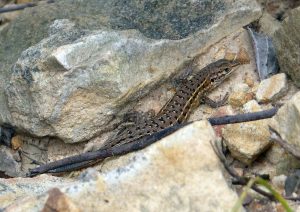
The cinderella Lizard finds its main habitat in the Mediterranean scrub, but also in grasslands and crop fields. It can measure up to 15 cm and feeds on insects and spiders. It is widely distributed throughout the region, being most abundant in the province of Cáceres. The cinderella lizard frequently observed between April and October.
Cyren’s rock lizard Iberolacerta cyreni
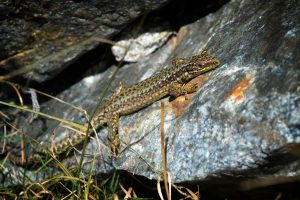
It is a robust, medium-sized lizard that lives in high mountain rocks. Its dorsal coloration is brown or green with reticulation and it has a smooth bordered collar. We found it above 1700 m of altitude, in the mountain ranges of the north of Cáceres. It is an Iberian endemism that feeds mainly on insects and arthropods. Today it is threatened by loss of habitat quality.
Geniez’s wall lizard Podarcis virescens
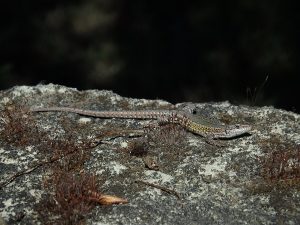
Apparently very similar to Podarcis guadarramae, it differs from the latter by small nuances. The dorsolateral bands are more rounded and less elongated and the iris is usually more orange. Males also tend to be less flattened. It can be found throughout the region, in rocky and sparsely wooded areas. It is often associated with human constructions and / or farming areas.
Iberian lizard Podarcis Guadarramae
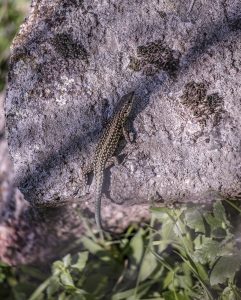
It is a small lizard, with a flat head and variable colouring. It lives in areas with little vegetation, preferably rocky and stony soils, and can be found in rural areas. The iberian lizard basically feeds on insects, although it can also prey on the young of other lizards. It can be found mainly in the northern half of Cáceres.
Long-tailed lizard Psamodromus algirus
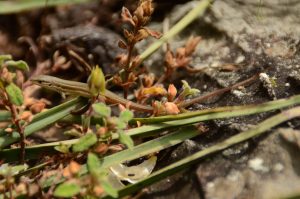
A large lizard can grow to over 20 cm (tail included). Its tail can measure 60% of the total or even more. Very associated with the Mediterranean mountain, it inhabits both thickets and forests of all kinds. It is one of the most abundant species in the region and is adapted to all types of environments.
Ocellated lizard Lacerta lepida
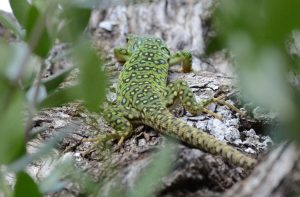
It is a large lizard and very abundant, it is rare not to come across it on our spring walks through areas of Mediterranean scrub, grassland or cultivation areas. Its importance in the ecosystem is key, as it forms part of the diet of a good number of predators. Among them we could highlight the short-toed snake eagle Circaetus gallicus.
Red-tailed lizard Acanthodactylus erythrurus
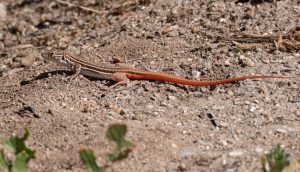
An intermediate size lizard, which can reach 23 cm (including tail). It has a typically striped back and its tail usually has reddish tones, hence its name. It lives in areas of scrubland, conifer and oak woods mainly, provided they are open and it has a predilection for sandy soils. More abundant in the province of Cáceres and likes to sunbathe on its own soil. It is not currently under threat, although it is not particularly abundant.
Family Gekkonidae (reptiles of Extremadura)
Common gecko Tarentola mauritanica
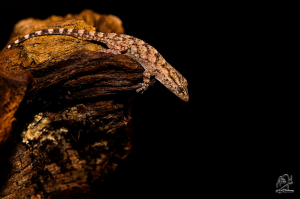
This small reptile, very common throughout the region, lives mainly on rocks and stony ground, although it is very common to see it on walls and walls in rural environments. At nightfall and especially in summer, it is common to see them on top of walls, stalking insects that approach nearby streetlights to feed on them.
Pink gecko Hemidactilus turcicus
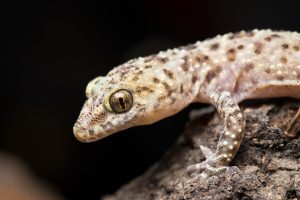
Its habitat is similar to that of the common gecko, but its distribution is much more restricted. Its smaller size and lighter, slightly pinkish tones give it away. When it coexists with the Tarentola mauritanica it moves towards more closed grounds, close to the ground. It is more abundant in the province of Badajoz, although it is also expanding in the province of Cáceres to the north.
Family Scincidae (reptiles of Extremadura)
Western three-toed skink Chalcides striatus
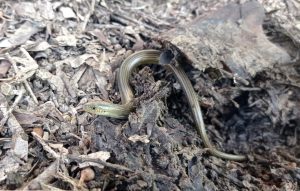
A curious reptile whose limbs are so atrophied that they hardly help it in its locomotion. Its habitat is varied and it can be found in scrubland, pastureland and grassland ecosystems, provided there are streams or pools nearby. Despite its appearance, it moves very quickly and at the slightest sign of alarm it hides under rocks or in holes in the ground, making it difficult to observe. Present in both provinces, although not particularly abundant, it is always linked to areas with a certain degree of humidity.
Iberian skink Chalcides bedriagai
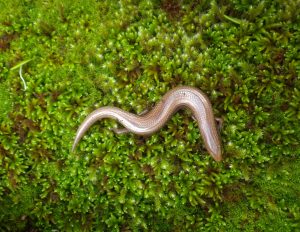
Unlike its relative, its back is rather smooth (striped on the three-toed), and it is a little smaller. Its limbs are very small, but it still uses them when moving. It also lives in areas with little tree cover and stony places, with sandy or earthy substrate. It is also very difficult to observe, as it tends to camouflage easily among the grass or leaf litter. Fragmented and irregular distribution also throughout the region.
Family Amphisbaenidae
Iberian worm lizard Blanus cinereus
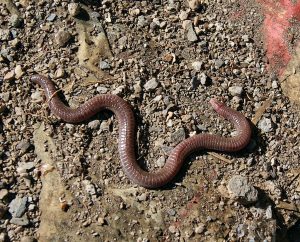
Another curious reptile, in this case totally adapted to underground life and without limbs. Rarely exceeds 25 cm, usually inhabits under oak groves, oak and pine forests of the Mediterranean. It has a preference for warm environments but where there is a certain amount of humidity that makes it easier to dig galleries in the ground. Present throughout the community, the best way to observe it is by lifting stones and being lucky…
Maria’s worm lizard Blanus mariae
Similar to Blanus cinereus, its length also does not usually exceed 27 cm. Also of underground habits, it likes sandy soils in which it can easily dig its tunnels. In principle it can be found throughout the region and is not threatened. It mainly feeds on insects and other invertebrates.
Family Bataguridae (reptiles of Extremadura)
Spanish pond turtle Mauremys leprosa
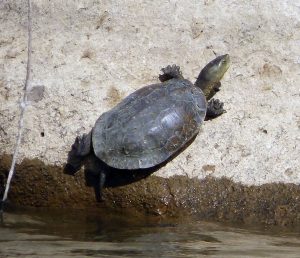
Present in ponds, streams, rivers and reservoirs is a reptile abundant in the community unlike the European pond turtle, more scarce and declining. It differs from it in that its carapace is flatter and olive green (the European has a more curved carapace, darker in colour and usually presents yellow lines). It is very common to see it sunning itself at the water’s edge when the sun is hottest.
European pond turtle Emys orbicularis
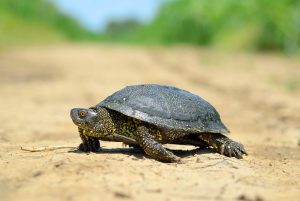
Much rarer than the spanish pond turtle, it is usually displaced by it when they coincide in the same ecosystem. Their diet is very similar in both species: all kinds of small animals, both vertebrates and invertebrates, including carrion and occasionally some plants. Both species are threatened by the introduction of an exotic species, the red-eared slider Trachemys scripta, with which they compete for habitat and food. Their populations are highly fragmented and endangered.
Thanks to Alvaro de las Heras, Ángel Cañones and Mariano Cordero for the pictures.

